But perhaps the most concrete application of Frank Kitson’s colonial philosophies in the context of the Troubles was the MRF. This was an elite unit so murky and clandestine that nobody seemed to agree even on the baseline matter of what precisely the acronym MRF stood for. It might have been Mobile Reconnaissance Force. Or Military Reconnaissance Force. Or Military Reaction Force. The MRF consisted of thirty or so special operators, both men and women, who were hand-picked from all across the British Army. They dressed in plain clothes, wearing bell-bottoms and denim jackets, and grew their hair long. Within the army, they were known as the ‘Bomb Squad’, because one of their responsibilities was reconnaissance, and they would stake out locations where they expected paramilitaries to plant a bomb. Soldiers of Irish origin were deliberately recruited, in order to blend in with the locals.
Members of the MRF drove around republican enclaves, conducting covert surveillance. But they also got out of their vehicles, in the heart of Indian country. They posed as road sweepers and dustmen. They huddled with the vagrants drinking methylated spirits by the side of the road. They also began to set up secret observation posts, creeping into shops and homes that had been damaged by rioting or fire. A single brick would be extracted from a walled-up façade, allowing an MRF member hiding inside to look out on the neighbourhood. One woman who worked for the MRF went door-to-door, selling cosmetics and gathering intelligence as she went. In December 1971, Kitson wrote a memo entitled ‘Future Developments in Belfast’, in which he explained that one critical means of bringing the fight to the IRA was ‘building up and developing the MRF’.
But the unit was doing more than gathering intelligence. It was assassinating people, too. Men in plain clothes would drive around in an unmarked Ford Cortina, with a Sterling sub-machine gun hidden under the seat. They had to keep the weapon out of sight, one MRF member would later explain, because they were camouflaged so effectively that if they passed an army outpost and were spotted with a gun, their own British colleagues ‘would open fire and we would be shot’. It was an MRF team that had burst out of the green van in West Belfast and attempted to murder Brendan Hughes. These hit squads deliberately carried particular makes of weapons that were used by the paramilitaries, so that when someone was murdered, the ballistics would suggest that it was the IRA or loyalist killers who were responsible, rather than the army.
‘We wanted to cause confusion,’ one MRF member recalled. If people believed the paramilitaries were responsible, it would erode their standing in the community and preserve the image of the army as a law-abiding neutral referee. This was particularly true in those instances where the MRF, seeking to assassinate a target, ended up inadvertently killing an unaffiliated civilian instead. One summer night in 1972, a twenty-four-year-old woman named Jean Smyth-Campbell was sitting in the passenger seat of a car at a bus terminal on the Glen Road when a bullet pierced the window and then her head. At the time, the police announced that ‘no security forces were involved’ in her death and implied that there might be some connection to ‘political bodies’ (a shorthand for paramilitary groups) in the area. Smyth-Campbell’s family came to believe that she had been shot by the IRA. It would be four decades before they learned that she was almost certainly killed by the MRF.
Frank Kitson was a maestro of press manipulation. In the aftermath of a spasm of violence, he would summon the local Guardian correspondent, a young writer named Simon Winchester, to visit him at army headquarters for a briefing. Kitson would proceed to spell out, with great certainty, the circumstances of the relevant incident, citing the army’s classified intelligence files on the victims. Winchester, feeling lucky to have the scoop, would then dutifully report that the dead man in question had been a quartermaster or an ordnance expert or a senior marksman for the Provos. Winchester liked Kitson, whom he thought of as ‘the little Brigadier’, and they became friends; the young correspondent would make social visits to Kitson’s family at their home on the army base and play cards with Kitson’s daughter. It was only later that Winchester came to realise how shoddy British intelligence on the Provos was at that stage, and to suspect that much of the information he had parroted was simply wrong. He eventually concluded, and acknowledged publicly, that he had been used by Kitson as a ‘mouthpiece’ for the army.
Kitson’s Strangelovean attributes made him an object of obsession for the IRA. The Provos studied Low Intensity Operations and featured Kitson in their propaganda. In the fevered imaginations of the paramilitaries, he became an outsize antagonist, talked about but rarely seen, ‘Kits the Butcher of Belfast’. Already prone to wartime superstition, the Provos began to attribute any freak occurrence that they could not otherwise explain to the mind games of the shifty British strategist, as if he were some sort of poltergeist. There were plans to kidnap Kitson, though none of them ever came to fruition. The Provos were said to have a ‘death list’, with the names of priority targets for assassination; Frank Kitson was right at the top.
But the Provos were not the only ones to keep a death list. As the MRF conducted its surveillance and developed intelligence, the unit had its own catalogue of targets whom the operatives were authorised to shoot on sight. In the MRF’s secret briefing room in the heart of Palace Barracks, the walls were plastered with surveillance shots of the biggest ‘players’ among the Provos – their targets. According to an account by one former member of the MRF, the key figures on the wall included Brendan Hughes, Gerry Adams, and Dolours and Marian Price.
8
A prison floated in Belfast Lough. The HMS Maidstone was a five-hundred-foot ship that had been used during the Second World War to service submarines for the Royal Navy. When the Troubles broke out, the vessel was hastily recommissioned as emergency accommodation for two thousand British troops arriving in Belfast, then recommissioned again, as HMP Maidstone – Her Majesty’s Prison. The ship slouched in the harbour, at a jetty, twenty feet from land. The prison quarters consisted of two bunkhouses beneath the deck: stuffy, overcrowded spaces in which prisoners were confined in three-tiered bunks. The light was dim, filtering through a few small portholes. The space was ‘not fit for pigs’, as one prisoner put it.
One day in March 1972, armed guards escorted a high-profile prisoner onto the Maidstone . It was Gerry Adams. After being on the run for months, Adams had been snatched by troops in a dawn raid on a West Belfast home, and now he was ushered roughly into the hold of the ship. He was greeted warmly by friends and relatives who were being held there, but he soon came to hate the place, which he thought of as a ‘brutal and oppressive sardine tin’. He may have been a hardened revolutionary, but Adams was not a man who was indifferent to nourishment. He liked a good meal, and the food on the ship was foul.
Adams was also in pain. When he was arrested, he had refused to acknowledge that he was in fact Gerry Adams. Instead he made up a pseudonym – Joe McGuigan – and insisted that was his name. He was taken to a police barracks and interrogated, and eventually one of the few RUC officers who knew him by sight came in, took one look at him, and said, ‘That’s Gerry Adams.’ Adams didn’t care. He continued to insist, stubbornly, that his captors had the wrong man. He had been ruminating, lately, about counter-interrogation techniques. ‘I had seized upon the device of refusing to admit I was Gerry Adams as a means of combating my interrogation,’ he later recalled. ‘By continuing to assert that I was Joe McGuigan, I reasoned that I would thwart the interrogation by bogging it down on this issue.’
Читать дальше
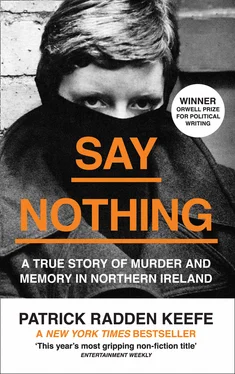
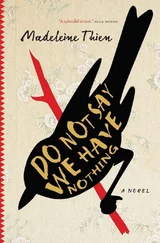
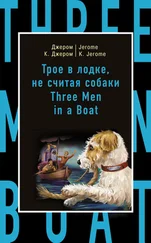

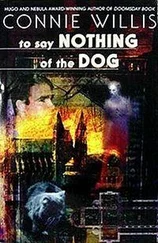
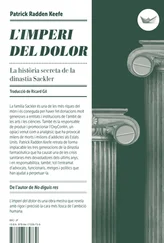






![Helen Rowland - The Widow [To Say Nothing of the Man]](/books/752764/helen-rowland-the-widow-to-say-nothing-of-the-man-thumb.webp)